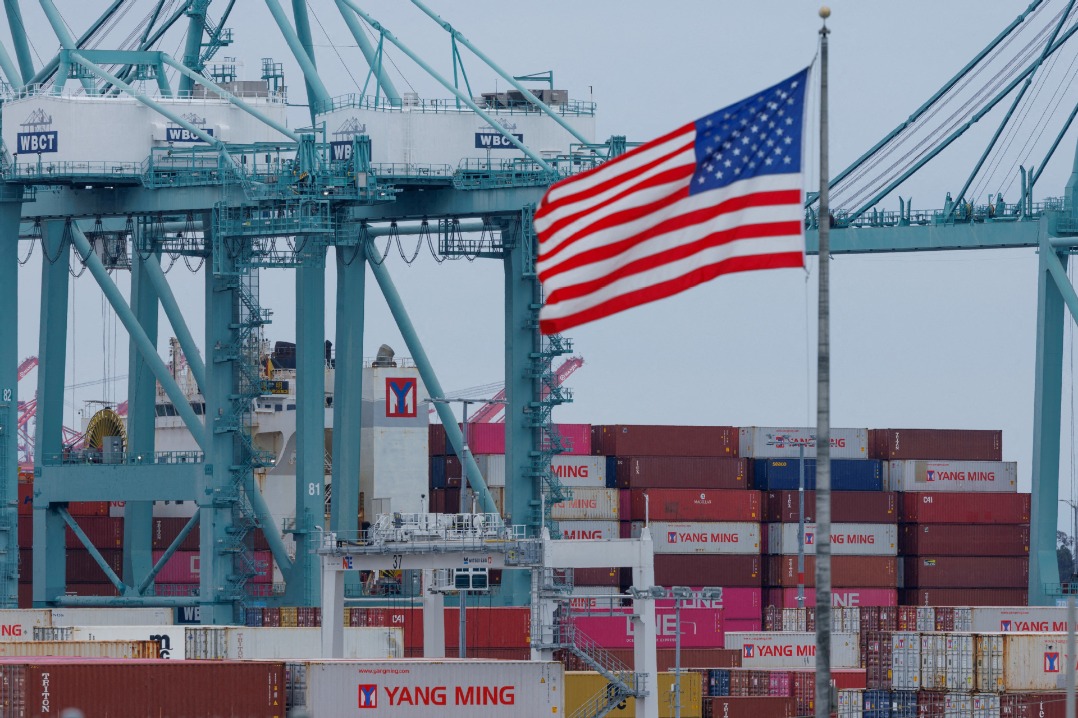Globalization drives development

While some state leaders and politicians exhibit strong anti-globalization tendencies, it is time to review the history of economic globalization and understand why we should rescue globalization, and how we can rescue it through global governance.
Classical economists of the 19th century, notably British political economist David Ricardo, said international trade, based on comparative advantage, can benefit all countries involved so they can prosper through globalized economic activities. However, it did not seem to bring prosperity to the poor countries, colonies and peripheral regions.
Modern theorists expect nations with initial low incomes to grow faster than their richer counterparts, and see a convergence of the world economy. According to them, as incomes rise quickly, the gap between poorer and richer countries will narrow.
However, such a convergence has never happened, at least during the period before the 1990s. Instead, the "Matthew effect"-in which the rich get richer and the poor get poorer-was in view. This phrase has been attributed to sociologist Robert K Merton. It has only been since the 1990s that convergence of the world economy has occurred, thanks to changes in the characteristics of globalization and their outcomes.
First, many developing countries embraced economic globalization and found their place in the global value chain. As a result, more low- and middle-income countries benefited from trade, cross-country investment and technological spillover.
Out of the 160 members of the World Trade Organization, more than half received their member-ship after January 1, 1995, when the founding members were designated.
Second, the wider participation in globalization pushed international trade back to the Ricardian type, in which comparative advantage determines the pattern of trade. According to Ricardo, a nation is said to have a comparative advantage if it can produce a particular type of goods relatively "more efficiently or relatively less inefficiently" compared with the other nation.
In the decades before the 1990s, the Cold War between the East and West and the divide between the South and North affected world trade. At the time, the developed countries conducted transactions between each other via intra-industry trade, while the developing countries barely participated in the worldwide division of labor.
Consequently, international trade was no longer based on comparative advantage.
Only after economic globalization became more widespread did international trade return to its classical form: inter-industry trade based on comparative advantage. As a result of inter-industry trade-developed countries exporting capital-intensive goods and importing labor-intensive goods from their developing partners-both groups gained from globalization.
Third, globalization does not guarantee equal distribution of overall gains among different groups within a country. In emerging economies, the labor market force has helped workers and low-income families share the outcomes of globalization through increasing participation in the labor force.
In some developed countries, the economic system and social policies in favor of the rich have failed to distribute and redistribute gains of globalization equally, resulting in losses to a major chunk of working families and the middle class.
Finally, the active participation in the global division of labor and implementation of domestic reforms have given the developing countries an opportunity to catch up with the developed countries. As a result, the world economy has been converging.
As a result of convergence, a large share of the world's population has been lifted from absolute poverty. From 1981 to 2015, China contributed to the overall reduction of world poverty by 76.2 percent.
Globalization and its governance can be characterized by two conflicting trends.
First, inexorably influenced by populism, protectionism and inward-looking policies of some developed countries, notably the United States, globalization is encountering a headwind. Second, as the world economic balance changes, the emerging economies, or broadly speaking, the developing countries-which make up a large share of the world economy and have a much greater say in international affairs-are increasingly becoming an important force in rescuing globalization.
The latter trend makes multilateralism not only a value, but also a necessity. As long as widespread participation universally benefits the developing countries, globalization will not be reversed by the will of a single country or handful of politicians, even though they are considered powerful. In fact, the overwhelming part of the world expects a more inclusive globalization and relies on multilateralism for reshaping the governance systems of globalization.
Just as infrastructure and equipment used for producing private goods require revaluation, the World Bank, International Monetary Fund and WTO ought to update themselves.
China has submitted a proposal for WTO reform aimed at maintaining its core values and basic principles, which include openness, inclusiveness and nondiscrimination, and ensuring the development interests of the developing countries.
The experiences of China and other developing countries show that openness and cooperation promote economic growth of a country and convergence of the world economy, while free trade and economic globalization will act as a strong driver for sustainable development of the world economy.
Cai Fang is vice-president of the Chinese Academy of Social Sciences. The views do not necessarily reflect those of China Daily.


































